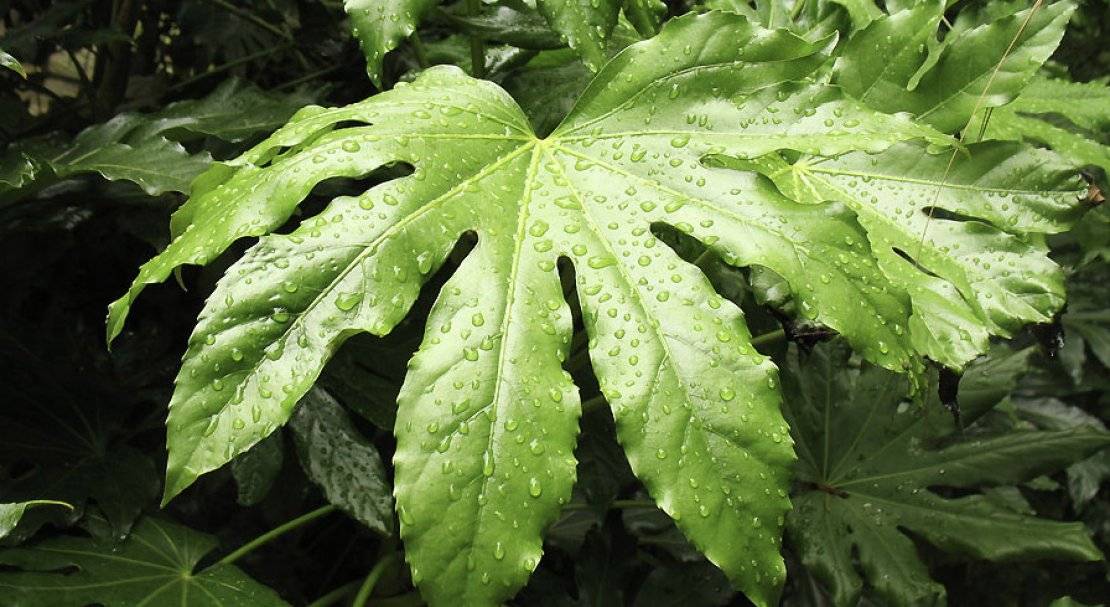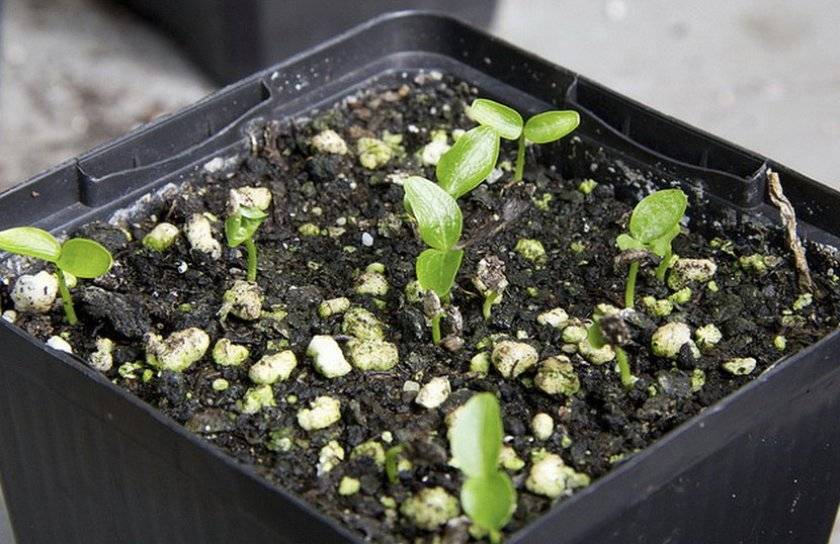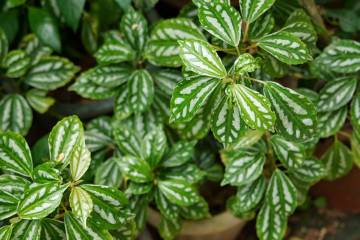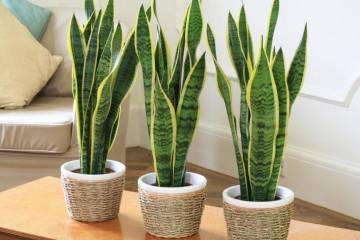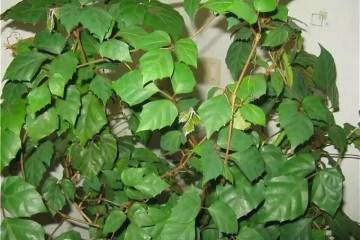Japanese fatsia - home care
Content:
Japanese fatsia leaves are similar to chestnut. Because of this, the flower is also called Japanese or home chestnut. This plant occupies a significant area, therefore it is recommended for keeping in large rooms. Further detailed information on breeding, planting, and caring for Japanese fatsia at home.
What does it look like, which family it belongs to
Fatsia comes from Japan, the culture belongs to the Araliev family. At home, the bushes reach a height of 1.5 meters. The leaves are large, cut into 7-9 lobes. Their diameter is 30-35 centimeters.
The color of the leaf plates is dark green, the texture is leathery, with a glossy sheen. There are varieties of Japanese fatsia with variegated leaves.
The flowers are white, collected in umbellate inflorescences. A pleasant aroma emanates from them.
Common varieties
The following varieties are popular among florists:
- Samurai. The bush reaches a height of 1.5 meters in 2 years. Leaves are green, glossy, finger-dissected.
- Variegata. The plant is undersized, reaching a height of 75-90 centimeters. On the leaf plates, yellow or white spots are randomly located.
- Moserie. This is a miniature representative of culture. The height of the Fatsia Moseri is 50 centimeters. The plant branches weakly. The leaves are green, glossy.
- Spider web. Fatsia leaf plates of this variety are pointed, green in color. All over the surface they seem to be dusted with flour.
- Murakumo Nishiki. The leaves of the culture are green, with a light yellow, sometimes lemon, pattern.
Fatsia - home care
Experienced flower lovers say that there is nothing difficult in caring for fatsia. If you fulfill all its requirements, the culture will grow for a long time without losing its decorative effect. The basic principles of good cultivation will be outlined below.
Temperature
Fatsia can withstand a temperature range of 18 to 25 ° C.
- In the summer, it can be taken out into fresh air, but kept protected from direct sunlight.
- In winter, the plant is kept in a room with an air temperature of 18 ° C.
Lighting
The culture develops well both in bright light and in partial shade. On a hot afternoon, the leaves should be protected from glare from the sun. Otherwise, they may get burned.
The more white or yellow spots on the leaf plates, the more intense the lighting should be.
Watering
Fatsia loves abundant watering. But the ground should not be wet all the time. The top layer of the soil must be allowed to dry out.
The water is used warm, settled.
Spraying
In summer, a lot of moisture evaporates from the surface of the leaves. Therefore, at this time of the year, the bushes should be abundantly sprayed with water from a spray bottle.
Periodically, the indoor flower can be given a shower.
Humidity
To increase the humidity of the air, the pot with the plant is placed in a tray, into which expanded clay is poured and water is poured. You can also place a vessel with water next to the flower.
Priming
The soil for fatsia should be loose, rich in nutrients.
A flower grower can prepare a substrate on his own from the following components:
- sod humus;
- leafy land;
- peat;
- sand.
In a flower shop, you can buy a ready-made substrate for decorative deciduous plants, and plant Japanese fatsia in it. At the bottom of the pot, it is imperative to place drainage from small stones, broken bricks, expanded clay.
Top dressing
Starting in March, the bushes are fed twice a month. Mineral fertilizers and organic matter alternate.
Introduce nutrients to moist soil. In autumn, this houseplant is fed 1 time per month, in winter, a dormant period is provided.
Features of winter care
Fatsia is an indoor flower, the development of which slows down in winter. This phase of the plant's life is called the dormant period.
At this time of the year, watering is reduced, feeding is stopped. Provided that the fatsia is located in a room with a high air temperature, the leaf plates are often sprayed.
Pruning
The pruning procedure must be carried out to form a beautiful crown.
The apical shoots are pinched every 2-3 months. If the stems are exposed, they are also cut using a sharp, sanitized tool.
Fatsia is a houseplant that does not require pruning, but periodic thinning will not harm it.
How does it multiply
Japanese fatsia can be propagated in several ways: by seeds, cuttings, air layers.
The first method is rarely used because of its laboriousness. Cultivation by the second and third methods is not difficult and is carried out in standard ways.
Germinating seeds
The seeds are placed in a vessel with water, and those that have not floated to the surface are used for planting.
The germination procedure is performed as follows:
- the box is filled with loose, nutritious soil;
- planting seeds to a depth of 1 centimeter;
- watered, covered with glass or film.
When shoots appear, the shelter is removed. Grown plants are planted in separate containers.
Rooting cuttings
The procedure is carried out in the spring as follows:
- the apical cuttings are cut with a sharp knife;
- a loose substrate is poured into the pot;
- the slices are dusted with growth hormones;
- cuttings are planted, watered;
- cover with foil.
Every day the film is removed, the condensate is wiped off. When young leaves appear, this means that the fatsia has successfully rooted.
Air layering
If the plant has lost its leaves for some reason, it can be propagated by air layers. The procedure is carried out in the spring. To do this, an incision is made on the trunk, wrapped in wet sphagnum moss, then with a film, tied with a rope.
Moss is periodically moistened with water. After about 1.5-2 months, roots will appear at the incision site. The trunk is cut below the root system, planted in a pot. They take care of the layering in the same way as for an adult bush.
Transfer
Fatsia is a fast growing flower, so it needs to be replanted every year. Use a pot with a diameter of 2.5-4 centimeters larger than the previous one. Adult bushes are transplanted every 2-3 years.
The procedure is carried out as follows:
- drainage is laid out on the bottom of the container;
- poured fertile soil;
- gently shake the flower out of the old pot, transplant it into a new container;
- watered.
If a diseased bush is transplanted, then the affected parts are cut off, sprayed with an antifungal drug. Then the cuts are sprinkled with crushed charcoal, the culture is planted in a new pot.
Diseases and pests
Japanese fatsia (japonica fatsia) has good immunity, but with improper care, it can lose its decorative appearance.
The main diseases and pests of the crop are as follows:
- Gray rot. The disease occurs due to excessive moisture in the earth. The affected roots are cut off, the plant is transplanted into new soil.
- Spider mite. The pest is identified by the presence of a web. It settles, usually, if the air in the room is dry. The tick is washed off with soapy water.
- Shield. Brown bumps appear on the leaves. The pest sucks out the juices, after which the leaf begins to turn yellow and dry. To get rid of the scabbard, the plant is wiped with soapy water.
A flower for prevention can be periodically sprayed with insectofungicides.
Signs and superstitions
There are the following signs associated with Japanese Fatsia:
- Creates a favorable environment in the home, filling it with positive energy.
- Protects the house from ill-wishers, evil eyes.
- Takes away negative energy. Therefore, it is recommended to keep the flower in an office with many employees and visitors.
In addition to its positive effect on the atmosphere, the plant is famous for its medicinal qualities. Its vegetative parts are used as an anesthetic, antiseptic substance. Medicines based on fatsia are used at elevated pressure as a tonic and general tonic.
Japanese Fatsia is a beautiful plant with large, finger-dissected leaves. She loves coolness, good lighting, and abundant watering. The plant is large, therefore it is recommended to purchase it for flower growers who have a large room. If you correctly fulfill the requirements of Fatsia, it will delight you with its decorative appearance for a long time.


